How Satoshi Kondo is breathing new life into Issey Miyake: ‘There’s always a story to tell’
As head of Issey Miyake’s womenswear, Satoshi Kondo nods to the pioneering designer’s legacy but is cleverly crafting his own path for the next generation

Early last year, the designer Satoshi Kondo found himself in Hiroshima’s LOG hotel, cocooned in a room created almost entirely from washi, the strong, tightly woven paper that has been handcrafted in Japan since the 7th century. Situated in the foothills of the Onomichi mountains, on a trail that leads to Senkoji Temple, an ancient pilgrimage site, the hotel is located in a former 1960s apartment building renovated by Indian architecture firm Studio Mumbai. As a longtime follower of Studio Mumbai’s work and drawn by the prospect of staying inside its first project in Japan, Kondo had landed there on a pilgrimage of his own. The stay proved revelatory. ‘Everything was covered in washi, even the hanger rail and the covers for the electrical outlets,’ he smiles. ‘Studio Mumbai’s work respects the past, the history of the land, its context, but they always translate it into something contemporary, modern… something timeless.’
Studio Mumbai’s embrace of washi, used in the hotel to replicate the feeling of floating within a paper lantern (‘LOG’ stands for ‘Lantern Onomichi Garden’), is a suitable metaphor for Kondo’s role as designer of Issey Miyake’s women’s line, a position he has held since 2019. The culmination of nearly two decades of experience at the Japanese fashion label, having worked for its various subdivisions, including Pleats Please Issey Miyake and Homme Plissé Issey Miyake, since 2007, his collections concern similar acts of transformation and evolution. Namely, how do you take the pioneering, inventive joie de vivre of the brand’s namesake designer – who passed away in 2022, aged 84, after a near-five-decade career at the label he founded in 1970 – with the demands of the future?
Satoshi Kondo’s new path at Issey Miyake
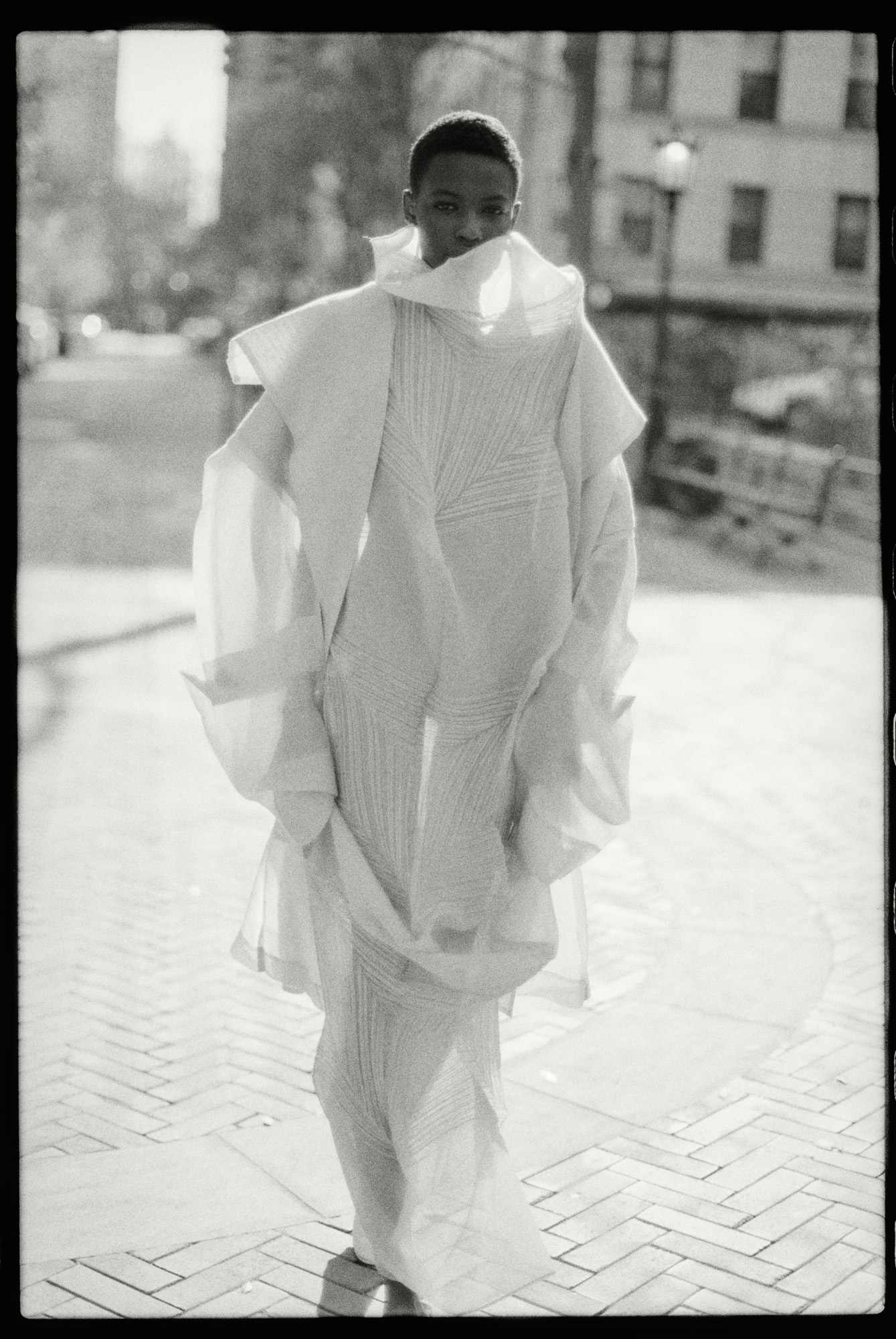
Coat, £2,195 (available at isseymiyake.com); dress, £1,265; shoes, price on request (enquire at isseymiyake.com)
In these terms, washi, on which Kondo printed his dedication to the designer at the first show after his death, held in September 2022, is symbolic. It is both an artefact of history and a blank slate for creating something new: for centuries, washi has been the canvas for intricate origami or chine-collé etchings, for screens and lamps, for bookbinding, even clothing.
Some months after his visit to LOG, on a drizzly September morning on the western outskirts of Paris, guests awaiting Kondo’s S/S 2025 show trailed into a contemporary glass-walled pavilion in the lush Parc Floral de Paris botanic garden. The unique showspace, which feels on the edge of nature and far from Paris’ urban sprawl, was without the usual white benches or ornate salon-style chairs usually present at a fashion show. Instead, guests were each assigned a stool crafted from the recycled sheets of paper used to protect garments in Issey Miyake’s heat-pressing pleating machines. A slip of traditional washi, made from hemp fibres by the Awagami factory and mill in Tokushima, explained to attendees that the show was titled ‘The Beauty of Paper’, while a poem-like accompanying blurb extolled the material’s sense of ‘timelessness’, ‘lightweight, soft and all-enveloping, sustaining everyday life since a time of distant past’.
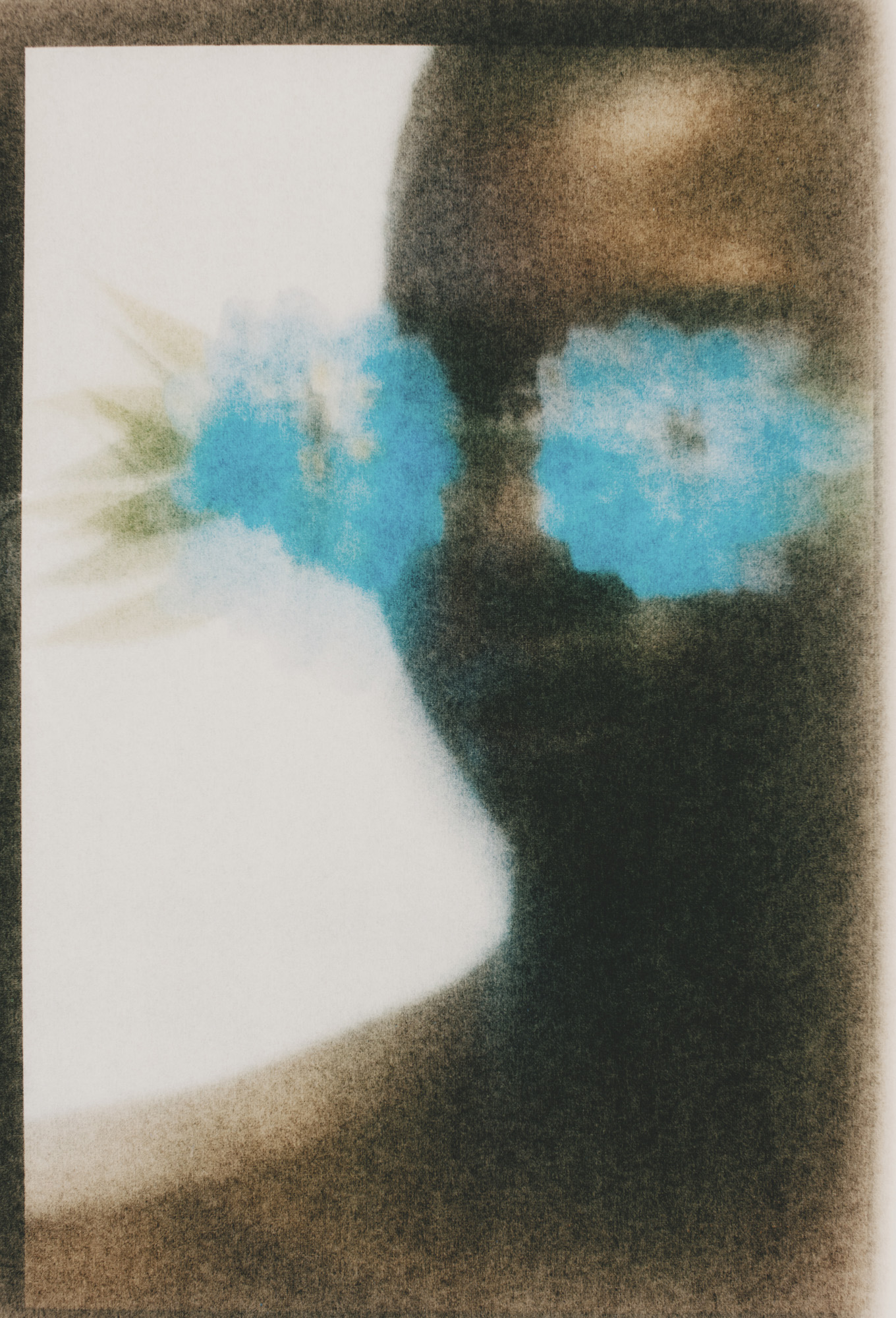
Mask, price on request (enquire at isseymiyake.com)
Presented on a paper-covered runway, the collection saw Kondo and his team explore the material’s near-endless ability for transformation, creating a series of dynamic silhouettes that were either intricately folded – recalling both origami and the late Miyake’s signature ‘plissé’ knife pleats – or undulated across their surface, like a piece of paper crumpled in the hand. Other garments were crafted from a washi fabric, recalling kamiko, a craft technique that roughly translates as ‘paper cloth’. Intricate and ephemeral, kamiko was first used by Japanese Buddhist monks in the 10th century to make robes durable enough for daily wear, due to the washi paper’s tight weave. In the collection, the washi fabric was crafted using a mix of washi and wool and mohair, or nylon and polyester, preventing it from disintegrating when wet (the mix depending on the garment). Hints towards nature, like glasses adorned with verdant greenery, or bunches of flowers sticking out from brown-paper shopping bags, appeared throughout, while wrapped and looping forms had a cocooning effect. Kondo said he wanted to evoke a mood of childhood wonder; as if to press the point, models theatrically twirled and posed on the runway, like a game of dress-up.
‘I’d love to be free of the cycle of fashion and just go on and on with an idea’
Satoshi Kondo
The afternoon after the show, Kondo invited Wallpaper* inside the Rue de Richelieu showroom used by himself and the team for preparations. Despite an admission of fatigue after working through the night, the designer was energetic, speaking rapidly through a translator and shuffling through fabric samples and various squares of washi, while vigorously demonstrating the way the collection’s garments can adapt to the wearer’s body through their intricate twists and folds. The wave-like construction of several of the garments (some appeared almost dampened with water) was the result of visits to washi factories, which are often located next to rivers due to the amount of water used in the process. ‘It’s a water-intensive craft, the water is always running. There’s always this beautiful river, and along that river is nature, light.’ It all lends washi an evocative quality: ‘Washi’s really textural, it’s comforting. There’s something psychological about it – emotional, even.’
Kondo was born in Kyoto, Japan’s ancient former capital, which is often seen as the country’s centre of craft and making. His mother was a dressmaking teacher; he remembers the whir of her sewing machine and the sheets of pattern paper that were scattered about his childhood home. ‘I think most Japanese children grew up playing with folding paper. For the team, a lot of memories came back working on this collection,’ he says, continually referencing his ‘genius’ pattern cutters and craftspeople, who were responsible for the way this simple childhood act was replicated in the collection through deceptively complex techniques (the minimal use of cutting, the lack of seams, knitting from a single yarn).
Wallpaper* Newsletter
Receive our daily digest of inspiration, escapism and design stories from around the world direct to your inbox.
Much of this work is not specific to a collection; rather, the various innovations dreamt up by his team are part of an ongoing enquiry into the potential of fabric, one which began with Miyake himself. ‘It’s a continual process,’ he says, observing that often ideas will be put on hold until the next season when there is time to complete them properly. Working this way, it’s sometimes hard for Kondo to decide when one collection is finished and the next begins. ‘I’d love to be free of the cycle of fashion and just go on and on with an idea.’ Instead, the decision is deferred to his team. ‘I just ask one of my team, can we do this? If the feedback is not so positive, then I know it’s a good point to pause.’
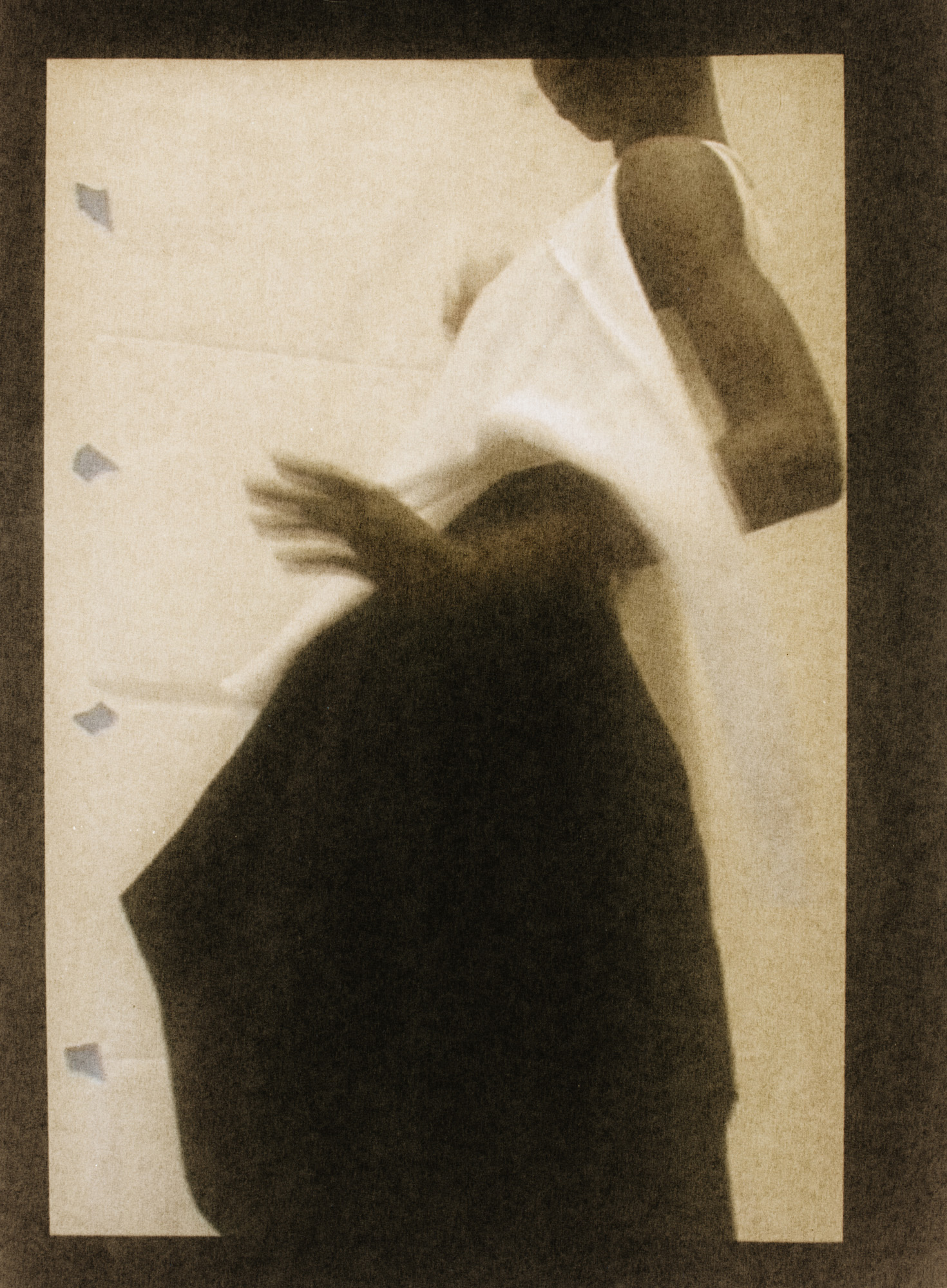
Top, £515 (enquire at isseymiyake.com); trousers, £1,175 (available at isseymiyake.com)
What it comes down to, he says, is ‘retaining the integrity of a piece of fabric’. This is a particularly Miyakean response. The late Hiroshima-born designer, who showed his first collection in New York in 1971, would always return to the idea of ‘a piece of cloth’, a statement that spoke of the centrality of fabric to Issey Miyake (the 1998 diffusion line, A-POC, takes its name from the concept). Even his wildest creations – dresses in the shape of bouncing saucer-like orbs, windmill-like headpieces, garments that linked one model to another – came down to the simple interplay between the fabric and the body, inspired in part by traditional Japanese dressing rituals. ‘The body, the fabric covering it, and a comfortable relationship between the two,’ he would describe as the nexus of his work, which was underpinned by a feeling of pragmatism – these were clothes not simply to marvel at but to wear (as such, he always described himself as a ‘clothing’ rather than ‘fashion’ designer).
‘Issey Miyake was never guided by trends. There was always a story to tell, and that story was original’
Satoshi Kondo
In early 2024, Kondo presented an A/W 2024 collection titled ‘What Has Always Been’, which explored the primal desire to wrap the body with cloth, whether for warmth or decoration. According to Kondo, ‘the origin of clothing is the fact that there’s always a human body and there’s a piece of cloth. It’s an essential act, and the most beautiful thing in the world.’ It made for a bold, intuitive collection, which he described as both ‘spontaneous and deliberate’; a nod to Issey Miyake’s legacy but not trapped by it. Critics noted a growing momentum from the label, with Kondo himself unafraid to create clothing on his own terms rather than basking in past glories.
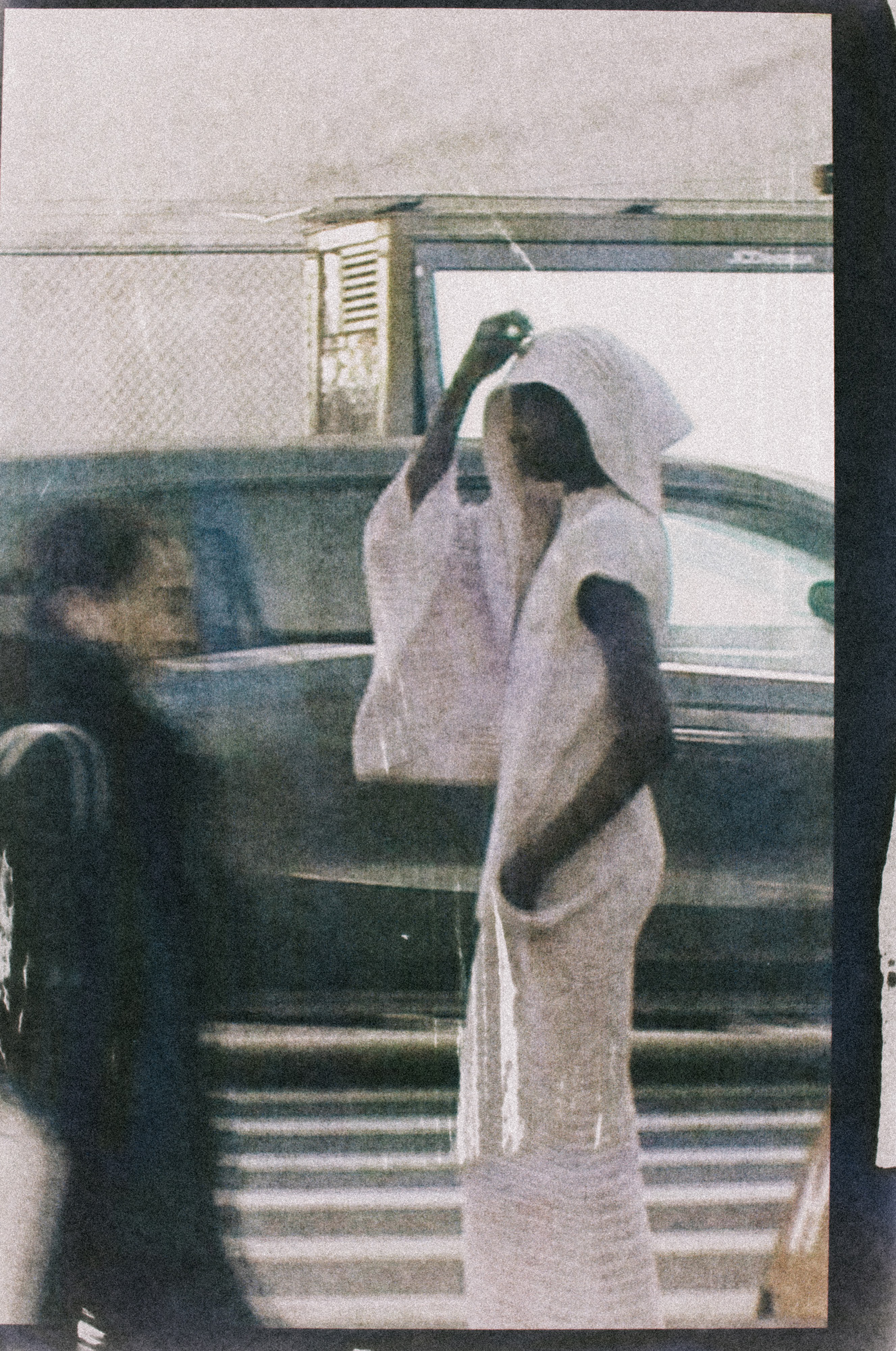
Cardigan, £690 (enquire at isseymiyake.com); dress, £955 (enquire at isseymiyake.com)
‘Miyake was never guided by trends from the wider industry,’ says Kondo. ‘There was always a story to tell, and that story was original. We’ve continued a creative process that doesn’t allow too much influence from the outside. Miyake was tenacious and stubborn. It’s something that echoes with me, too – that tenacity, that perseverance. He continued until he found something really original. It’s a mindset. When you want a really beautiful flower, you don’t go to the florist, you go out into the forest.’
Model: Abuk Adeer at The Society. Casting: Ikki Casting at WSM. Hair: Kabuto Okuzawa at WSM using Oribe. Make-up: Akiko Owada at The Wall Group using Chanel Beauty. Photography assistant: Jake Holler. Special thanks to: Far-Near Studio, Arlington Garrett and Neil Nanda at Color Resource Center.
A version of this article appears in the March 2025 issue of Wallpaper*, available in print on international newsstands, on the Wallpaper* app on Apple iOS, and to subscribers of Apple News +. Subscribe to Wallpaper* today.
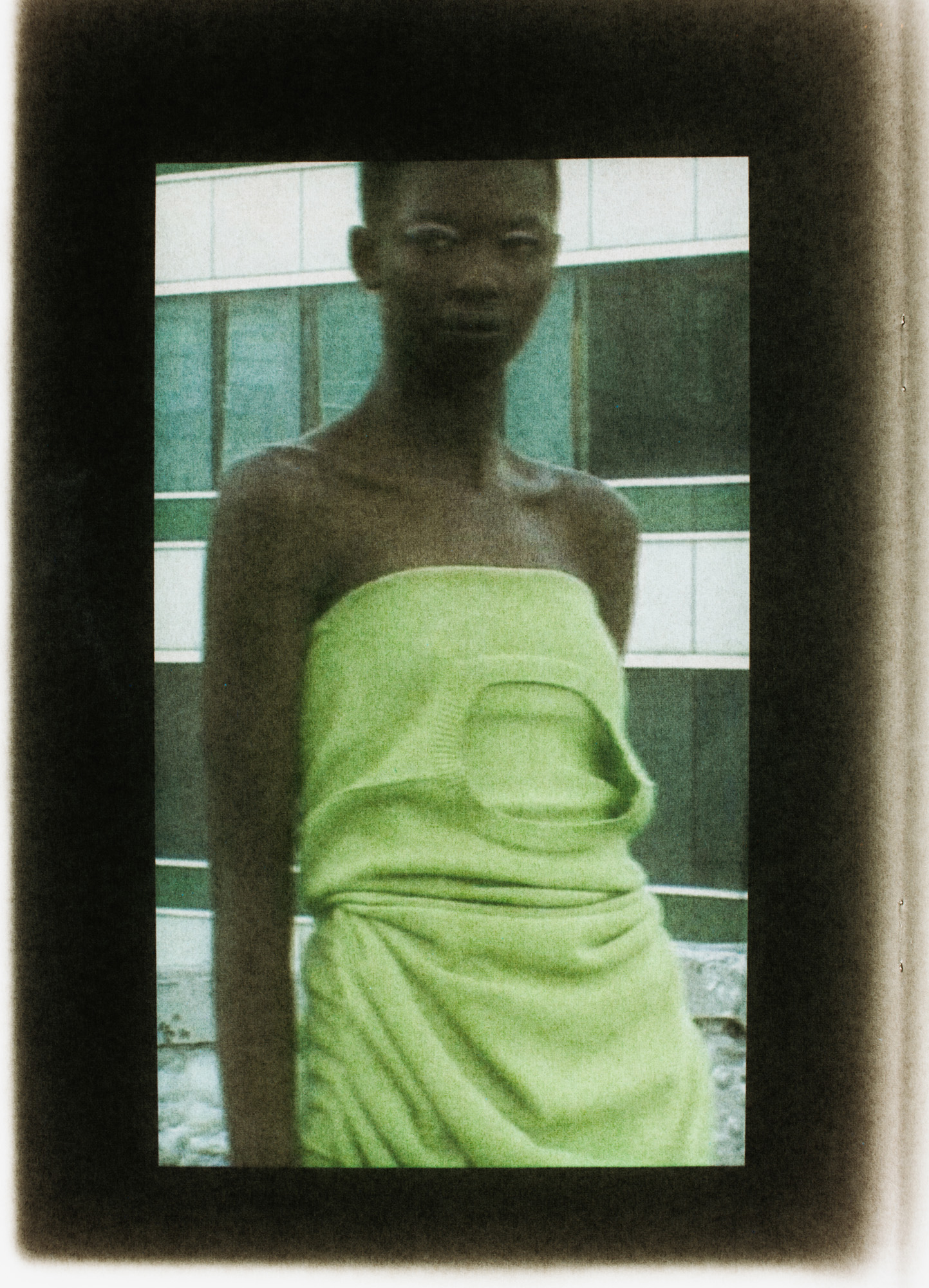
Dress, £550 (enquire at isseymiyake.com)
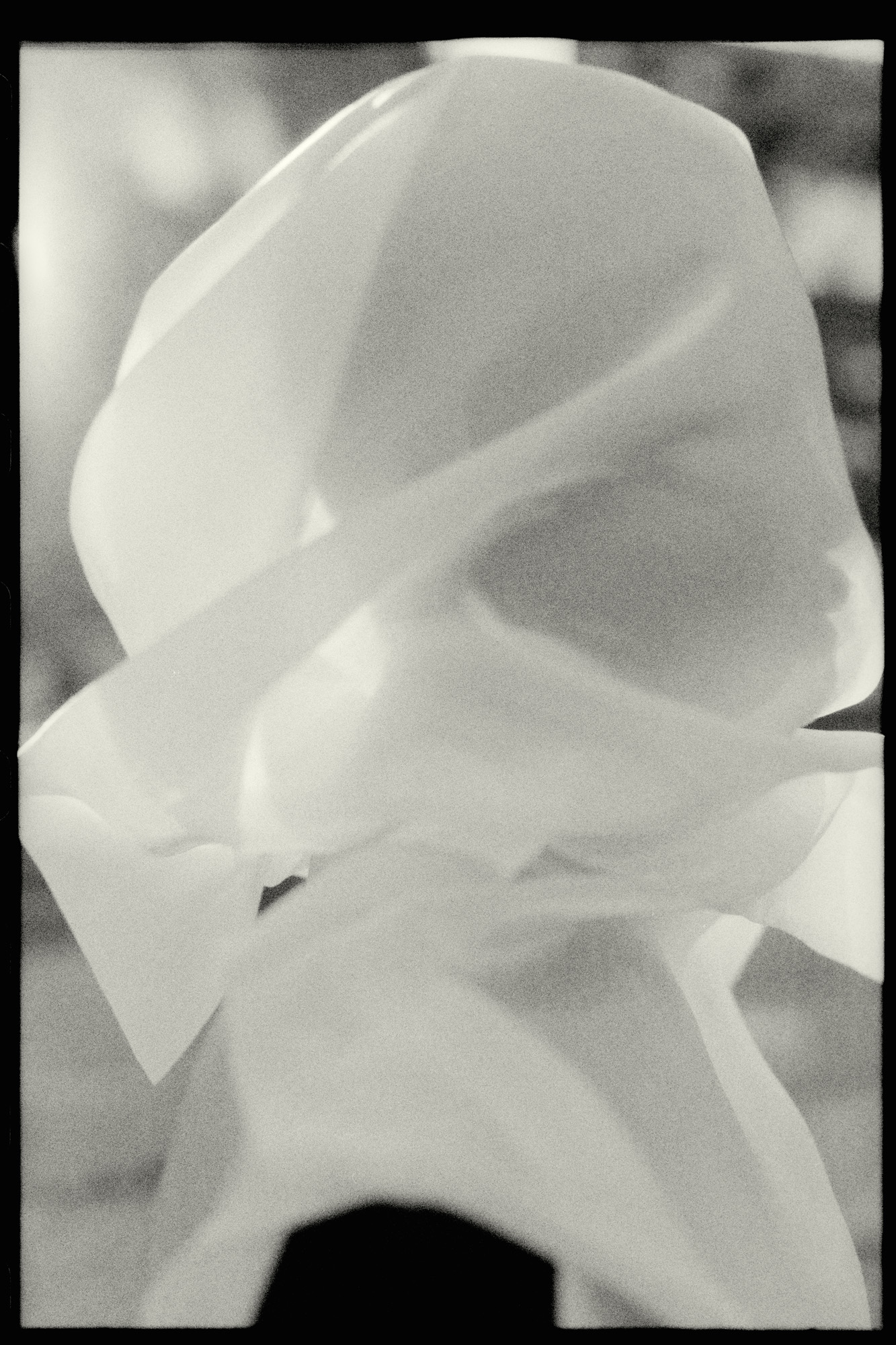
Dress, £790 (enquire at isseymiyake.com)

Top, £515 (enquire at isseymiyake.com)
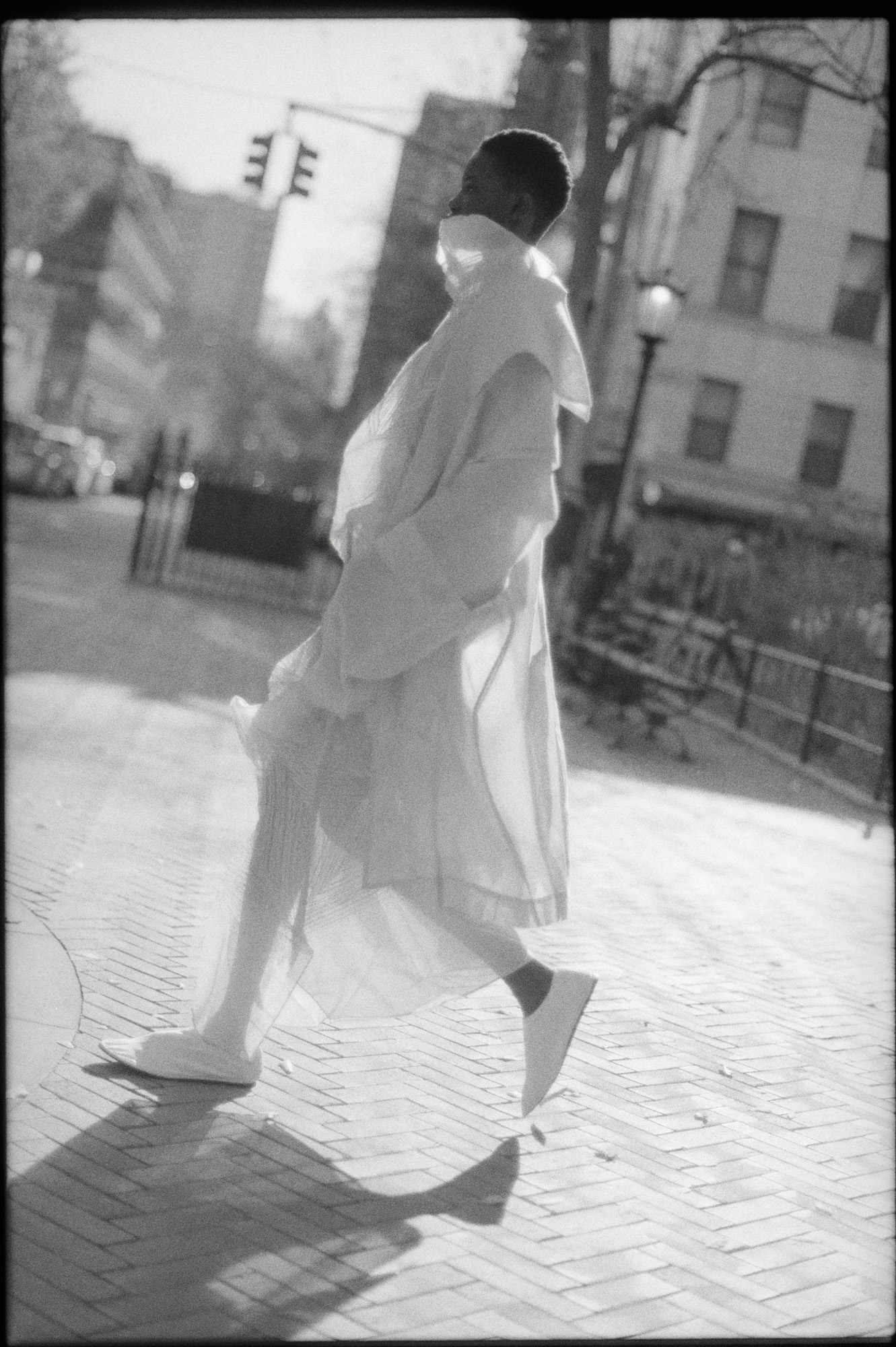
Coat, £2,195 (available at isseymiyake.com); dress, £1,265; shoes, price on request (enquire at isseymiyake.com)
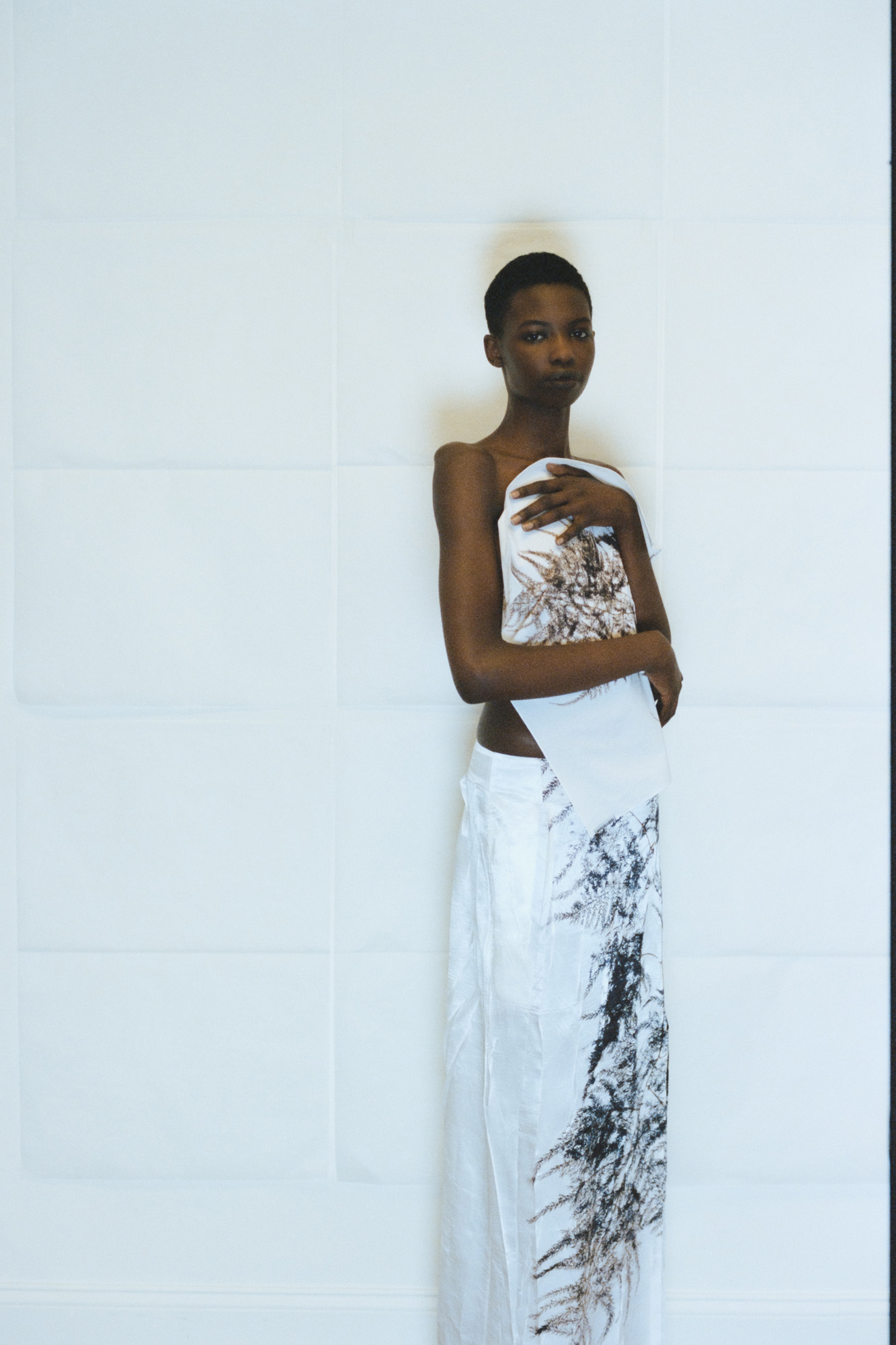
Scarf (worn as top), £85 (enquire at isseymiyake.com); skirt, £995 (enquire at isseymiyake.com)
Jack Moss is the Fashion Features Editor at Wallpaper*, joining the team in 2022. Having previously been the digital features editor at AnOther and digital editor at 10 and 10 Men magazines, he has also contributed to titles including i-D, Dazed, 10 Magazine, Mr Porter’s The Journal and more, while also featuring in Dazed: 32 Years Confused: The Covers, published by Rizzoli. He is particularly interested in the moments when fashion intersects with other creative disciplines – notably art and design – as well as championing a new generation of international talent and reporting from international fashion weeks. Across his career, he has interviewed the fashion industry’s leading figures, including Rick Owens, Pieter Mulier, Jonathan Anderson, Grace Wales Bonner, Christian Lacroix, Kate Moss and Manolo Blahnik.
-
 Put these emerging artists on your radar
Put these emerging artists on your radarThis crop of six new talents is poised to shake up the art world. Get to know them now
By Tianna Williams
-
 Dining at Pyrá feels like a Mediterranean kiss on both cheeks
Dining at Pyrá feels like a Mediterranean kiss on both cheeksDesigned by House of Dré, this Lonsdale Road addition dishes up an enticing fusion of Greek and Spanish cooking
By Sofia de la Cruz
-
 Creased, crumpled: S/S 2025 menswear is about clothes that have ‘lived a life’
Creased, crumpled: S/S 2025 menswear is about clothes that have ‘lived a life’The S/S 2025 menswear collections see designers embrace the creased and the crumpled, conjuring a mood of laidback languor that ran through the season – captured here by photographer Steve Harnacke and stylist Nicola Neri for Wallpaper*
By Jack Moss
-
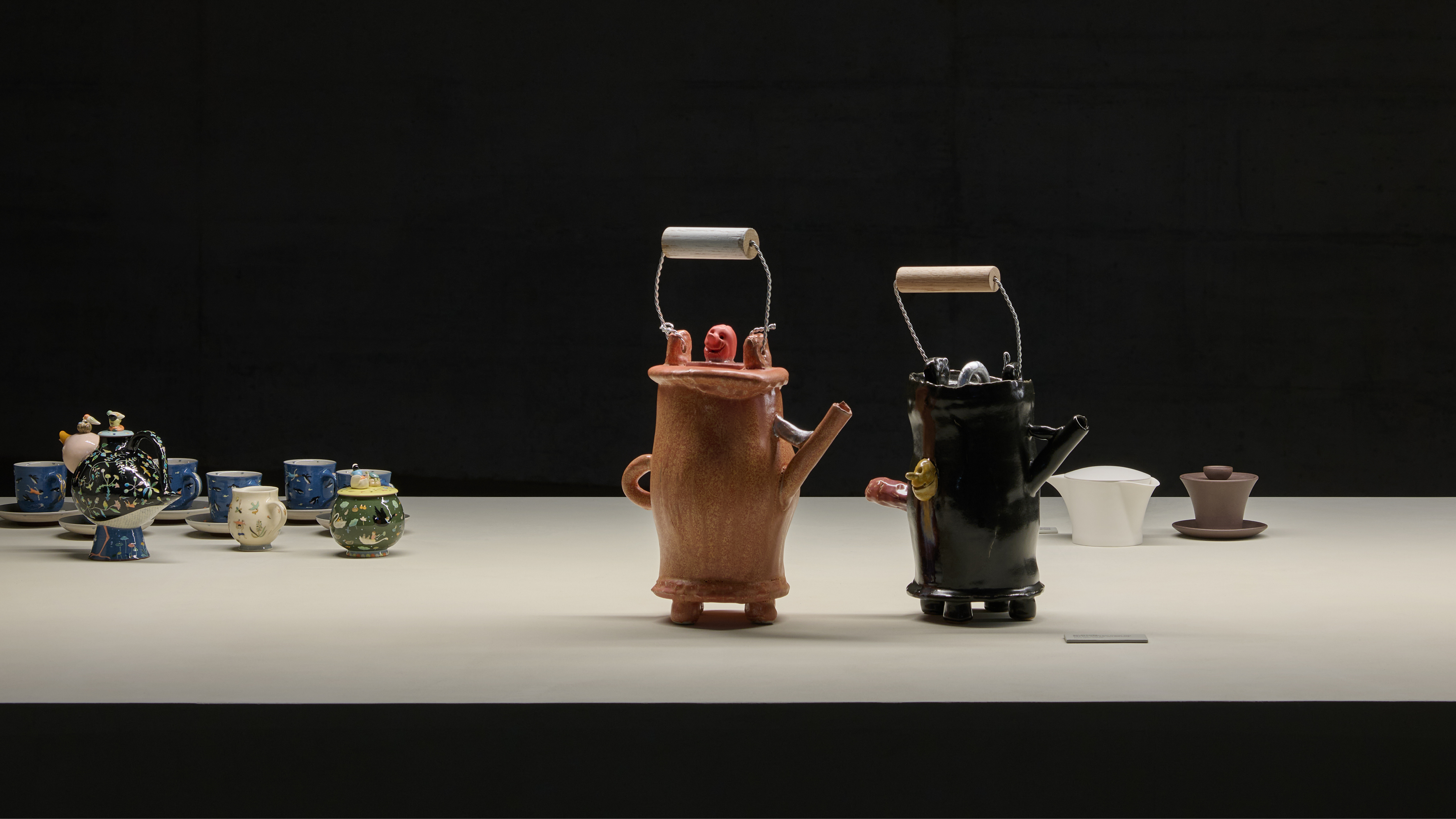 The best fashion moments at Milan Design Week 2025
The best fashion moments at Milan Design Week 2025Scarlett Conlon discovers the finest fashion moments at Salone del Mobile and Milan Design Week 2025, from Loewe’s artist-designed teapots to The Row’s first home collection
By Scarlett Conlon
-
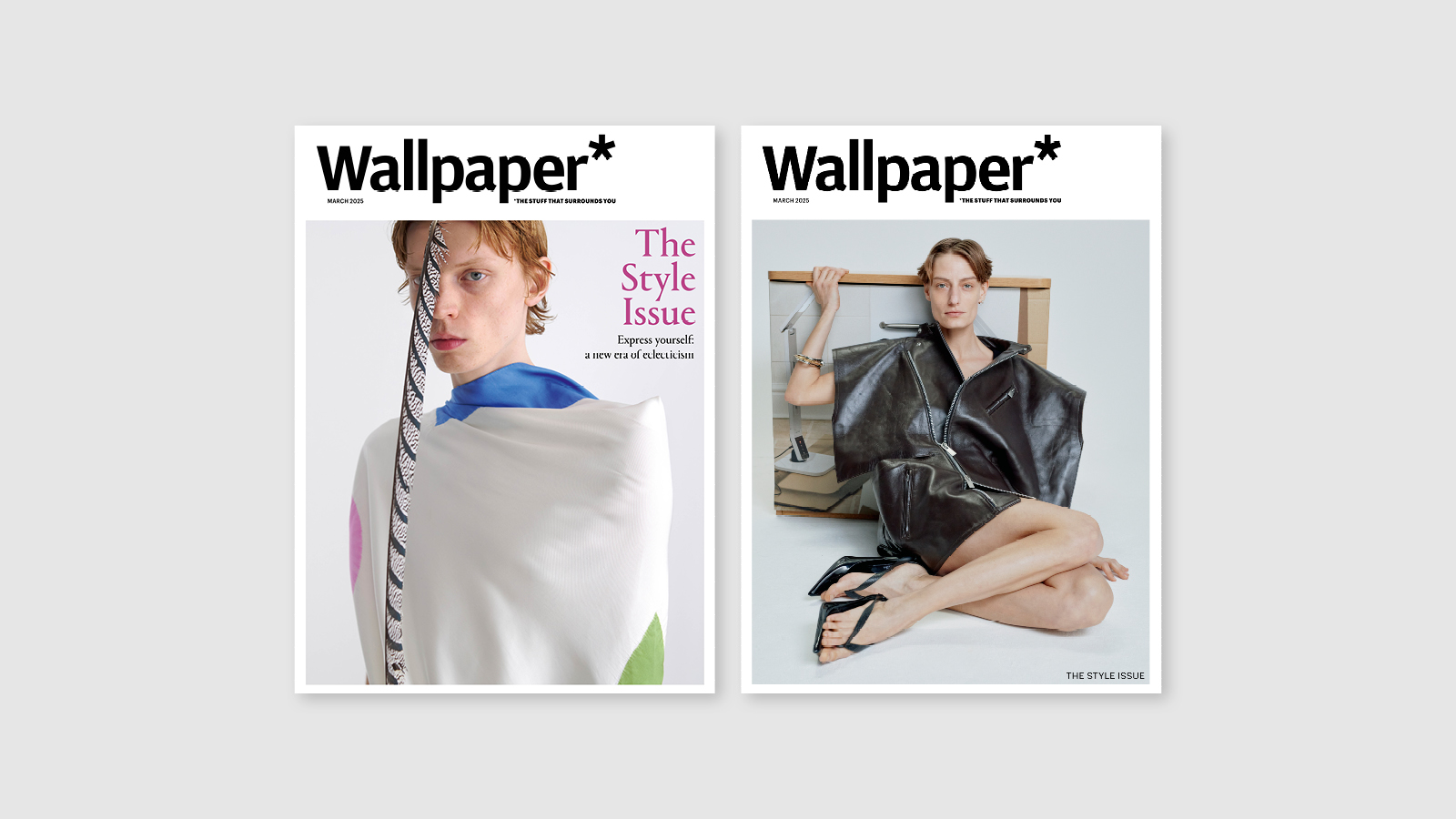 Embrace fashion’s eclectic new era with the Wallpaper* Style Issue, on sale now
Embrace fashion’s eclectic new era with the Wallpaper* Style Issue, on sale nowAs brands from Prada to Marni explore reinvention, find the sartorially unexpected amid the looks of the S/S 2025 season in the March issue, on newsstands now
By Bill Prince
-
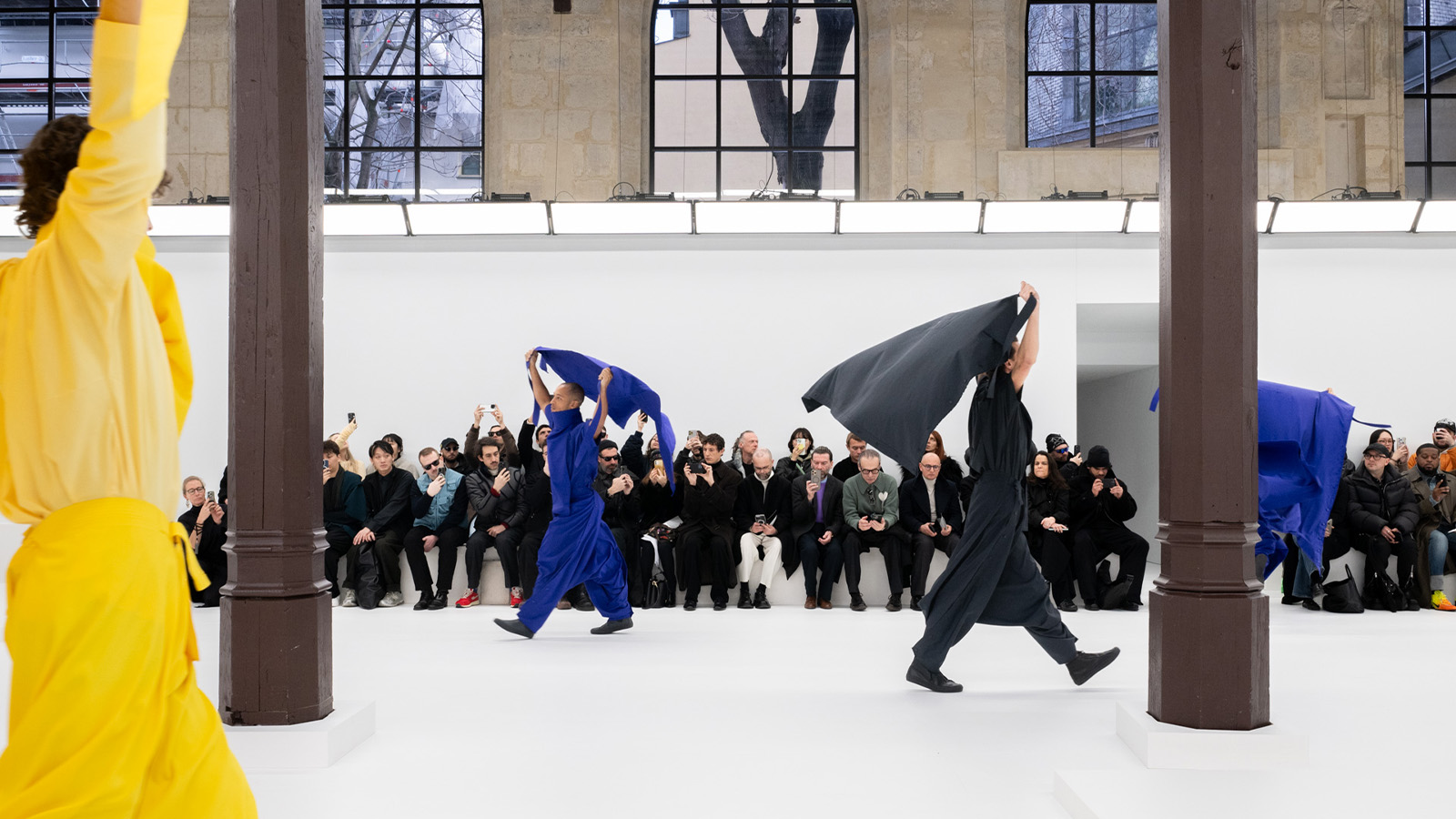 Inside the kaleidoscopic debut of Issey Miyake’s IM Men in Paris
Inside the kaleidoscopic debut of Issey Miyake’s IM Men in ParisMarking its debut in Paris, Issey Miyake offshoot IM Men stays true to the eponymous founder’s philosophy of ‘a piece of cloth’. Here, its designers tell Wallpaper* the story behind the shape-shifting collection
By Jack Moss
-
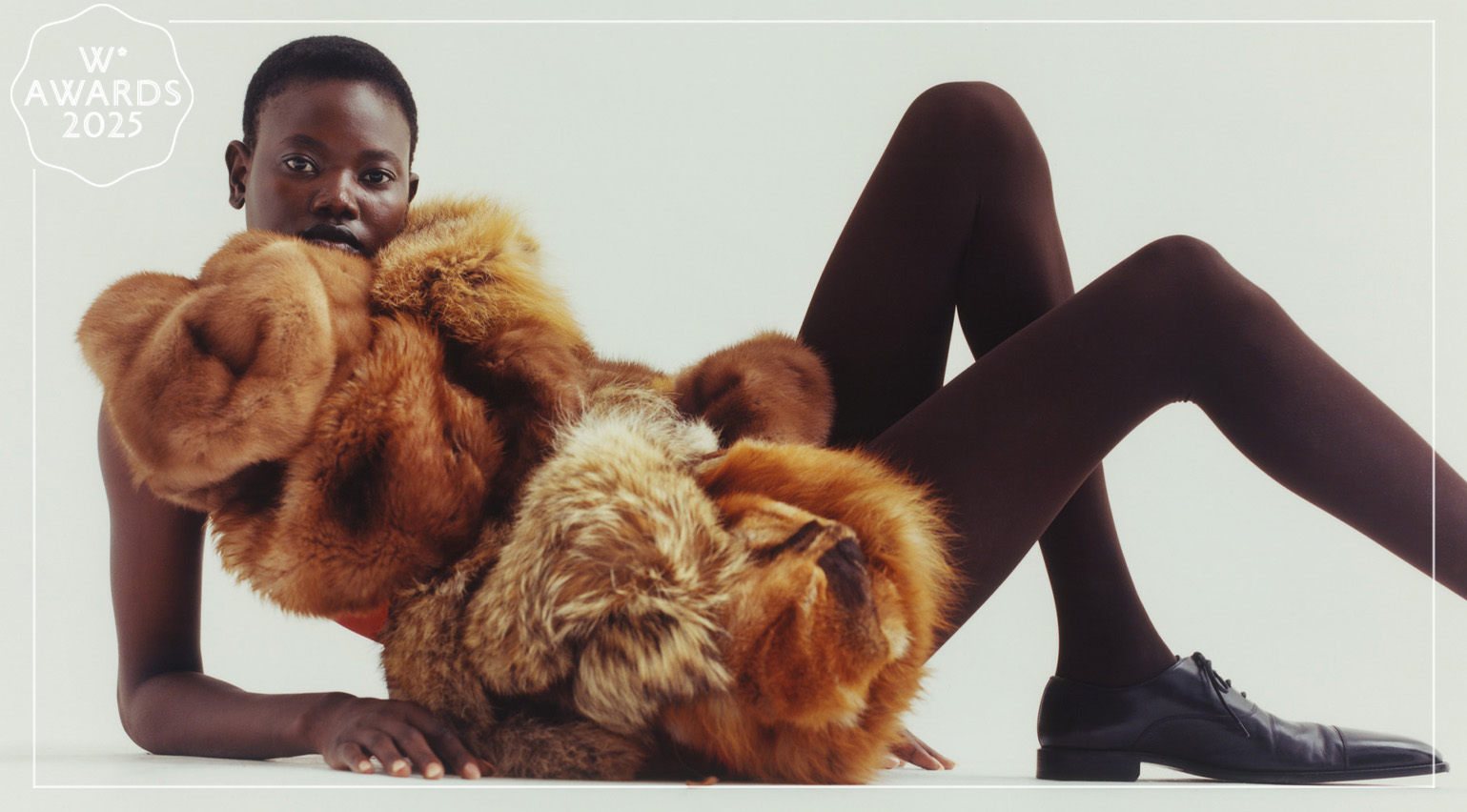 Wallpaper* Design Awards 2025: our fashion winners harness ‘the power of wow’
Wallpaper* Design Awards 2025: our fashion winners harness ‘the power of wow’Our fashion award winners have all created collections that transcend the everyday, prizing experimentation, construction and high-minded design. Fashion features editor Jack Moss and fashion & creative director Jason Hughes take a closer look
By Jack Moss